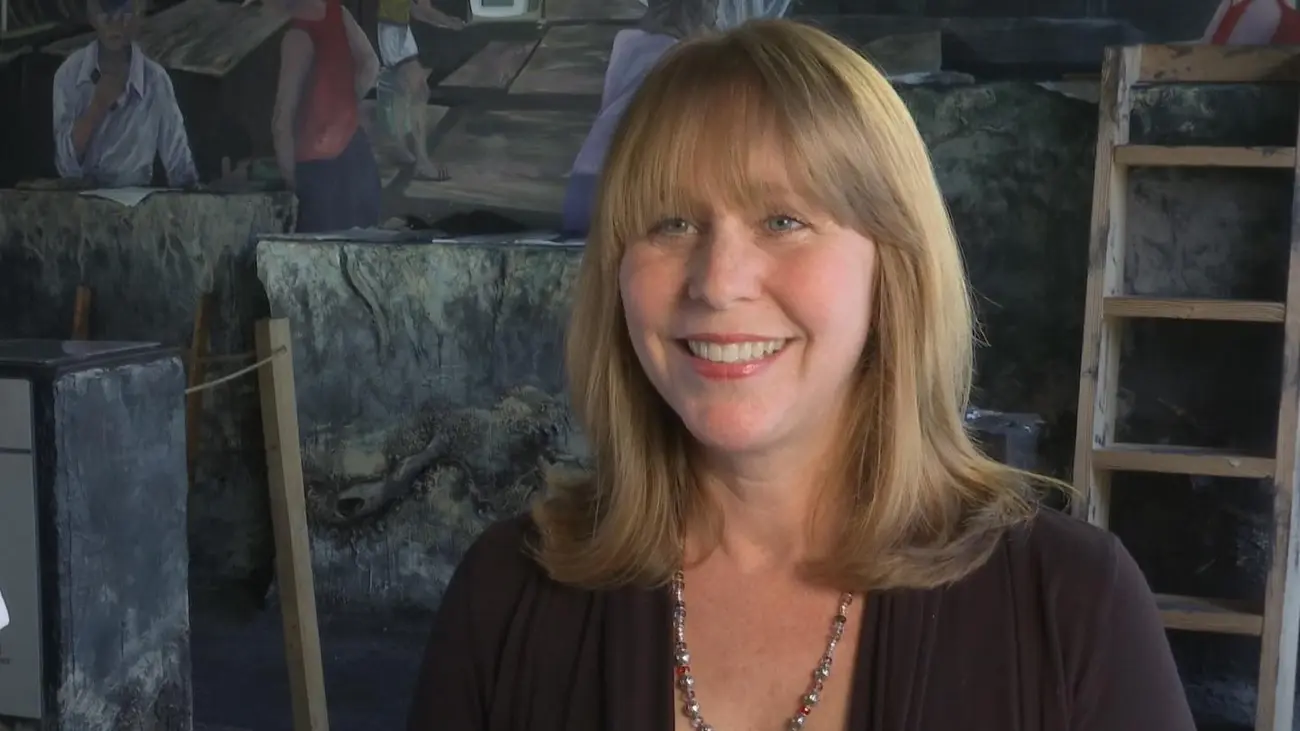This Friday night, a woman who was ritualistically buried in Brevard County more than 7,000 years ago will be brought back to life.
Using some of the same forensic reconstruction techniques used to identify modern crime victims from skeletal remains, artist Brian Owens has created the Windover Woman sculpture that will be unveiled this weekend.
“This was a fun project,” says Owens. “I usually work in bronze, so this more lifelike silicone material was a new challenge for me.”
Owens had measurements and computer generated images created from scans of a Windover skull to guide his work. The resulting bust sculpture will allow visitors to look into the eyes of a prehistoric Floridian.
In the mid-1980s, nearly 200 remarkably well-preserved human burials together with artifacts from the Archaic Age were discovered near the intersection of I-95 and SR50. The remains were wrapped in the oldest woven cloth found in North America. The anaerobic environment and the Ph balance of the pond cemetery allowed even brain matter to be preserved in 91 of the burials.
“The Windover site is actually the most important burial site in North America,” says Patrisha Meyers, director of the Brevard Museum of History and Natural Science and the Florida Historical Society Archaeological Institute.
“One of the things that make it so significant is the unique type of burial. It’s a pond burial; we don’t see that as often, and this is the most complete population that has been excavated from this period, about 7,000 to 8,000 years ago. They were able to excavate 168 individuals ranging in age from infancy to old age, and because of that, we were able to learn a great deal about these early lifeways.”
The event Friday evening from 6pm to 9pm is a fundraiser for the Brevard Museum of History and Natural Science and the Florida Historical Society Archaeological Institute that is based there.
The $75 VIP ticket includes live Native American music, gourmet food, beer and wine. Attendees will have one-on-one time with Owens, as well as archaeologists who have preserved and studied the Windover materials. They will be the first to see the improved and expanded “People of Windover” exhibition, including the Windover Woman sculpture.
Thanks to a grant from the Florida Humanities Council, the public is invited to the museum at no expense this Saturday to attend the panel discussion “Windover Archaeology: The Next Generation.”
Panelists will include Dr. Rochelle Marrinan, Windover archaeologist and chair of the anthropology department at Florida State University; Dr. Geoffrey Thomas, specialist faculty member in the FSU anthropology department; and Dr. Rachel Wentz, author of the book “Life and Death at Windover: Excavations of a 7,000 Year-Old Pond Cemetery.”
For the past three decades, most of the Windover remains and artifacts have been housed at Florida State University in Tallahassee. During that time, outstanding research has been done that expands our understanding of Archaic Age people.
“It’s really done a good job in terms of interacting faculty, undergraduate, and graduate students, because everyone’s interested in slightly different things,” says Geoffrey Thomas. “The more individuals with different interests that branch out and look at different things, access different diseases, different health statuses, demographics, growth and development, every new study really does broaden the general picture of the whole population.”
DNA testing was in its infancy when the Windover Dig took place, and other technological advancements have been made. Study of the Windover people and artifacts will continue to provide new information about our prehistoric past.
“There are a lot of different kinds of techniques that archaeologists are using these days,” says Rochelle Marrinan. “At the moment, I think the most pressing need is the genetic one. We’re hopeful that there will be new techniques that will allow us to retrieve material that can be genetically used to sequence this population, each individual if possible. That will give us the most information, and also show their relatedness to others in Florida.”
The improved and expanded People of Windover exhibition includes a refreshed recreation of the archaeological dig, a new interactive lab with “hands-on” activities, new interpretative panels, a new video presentation, and the Windover Woman sculpture.
More information about “Windover Weekend” is available at myfloridahistory.org.
